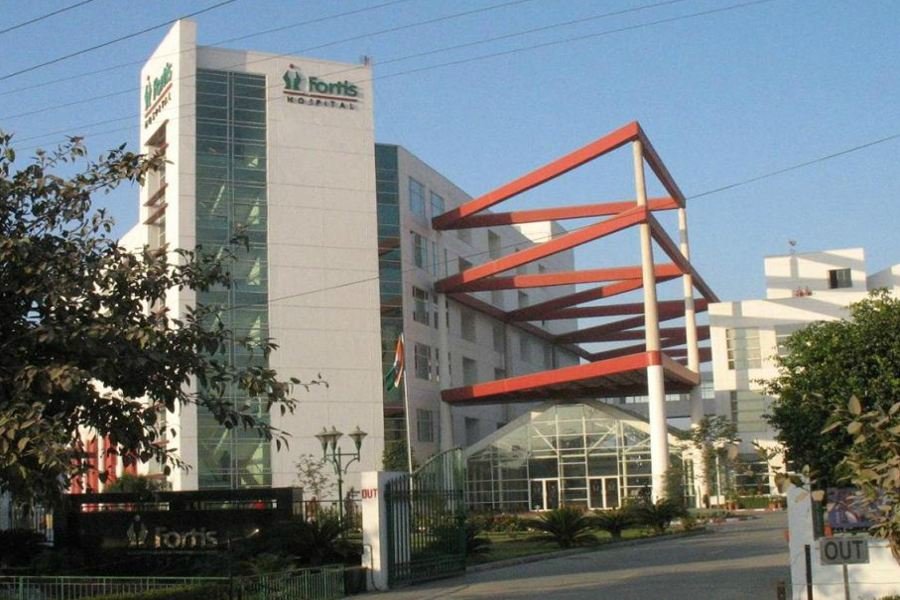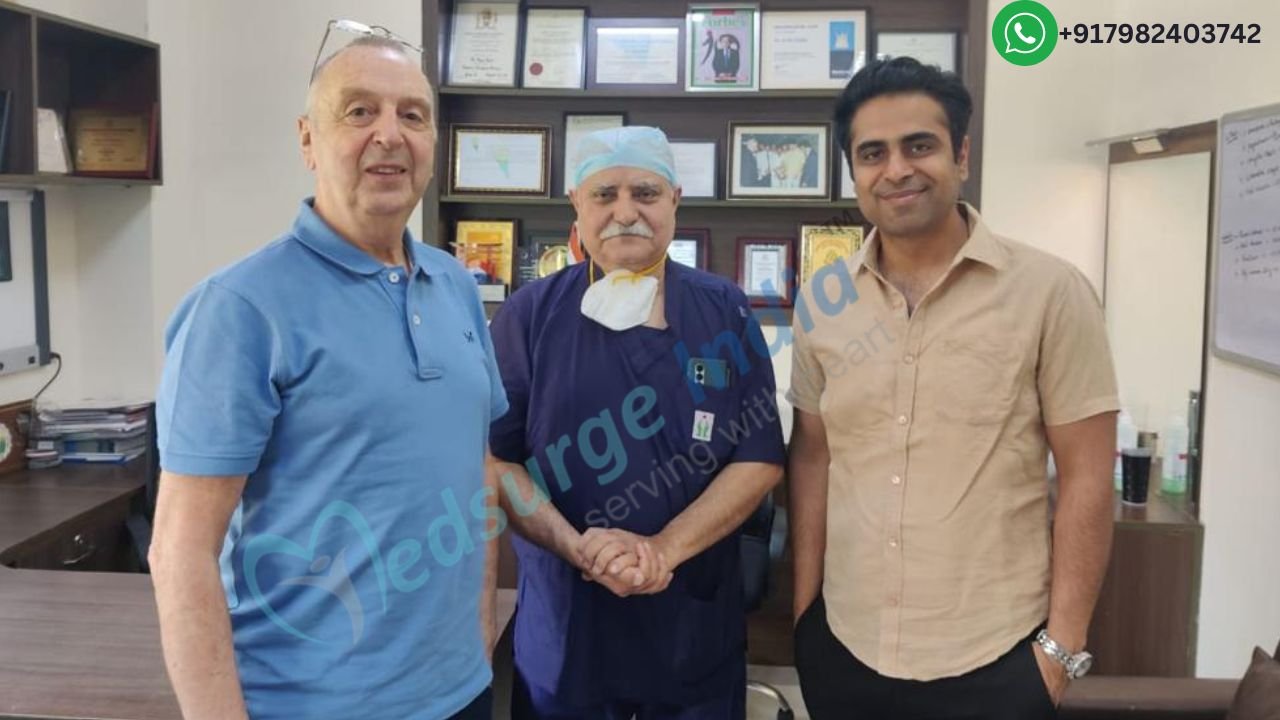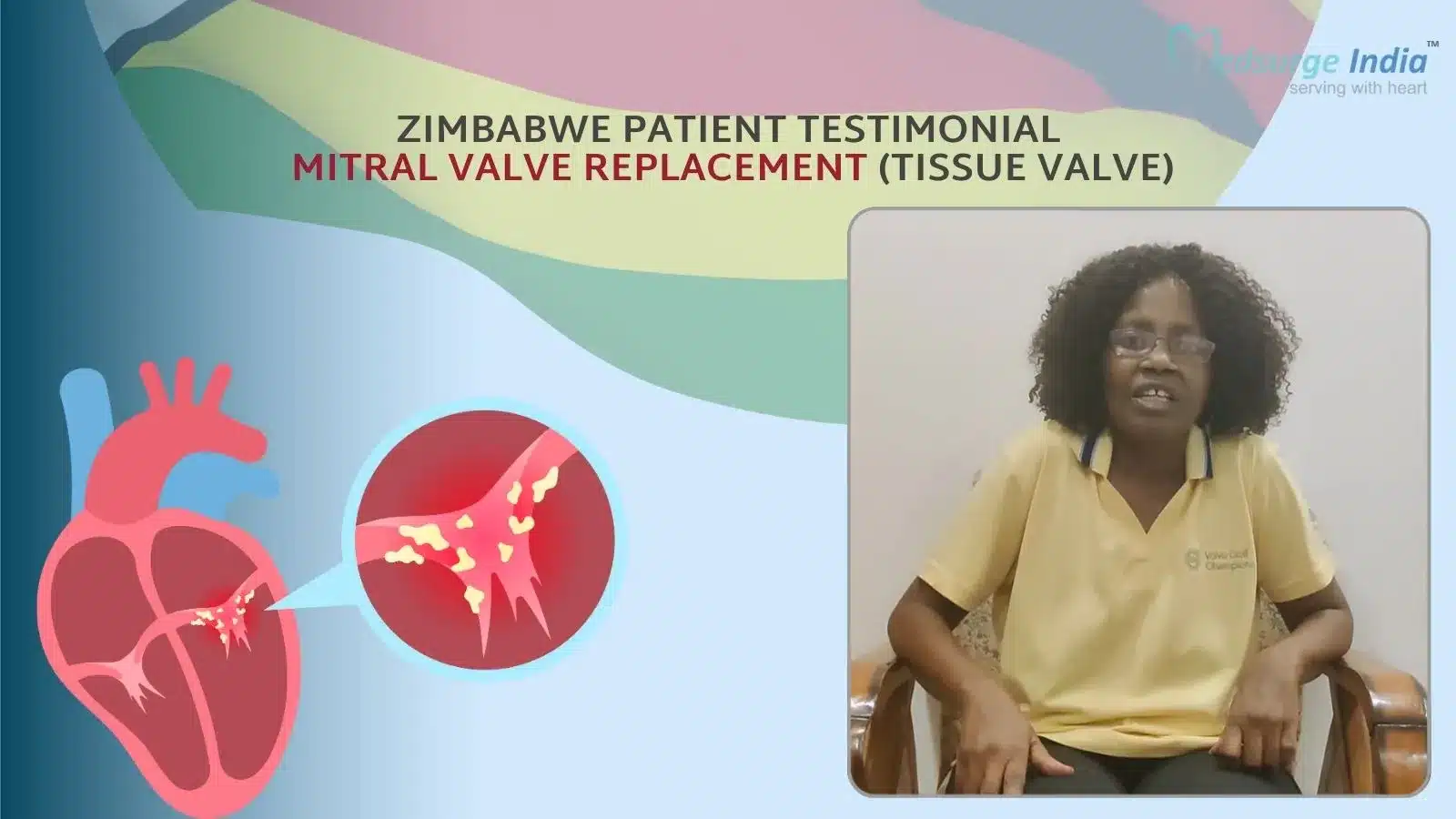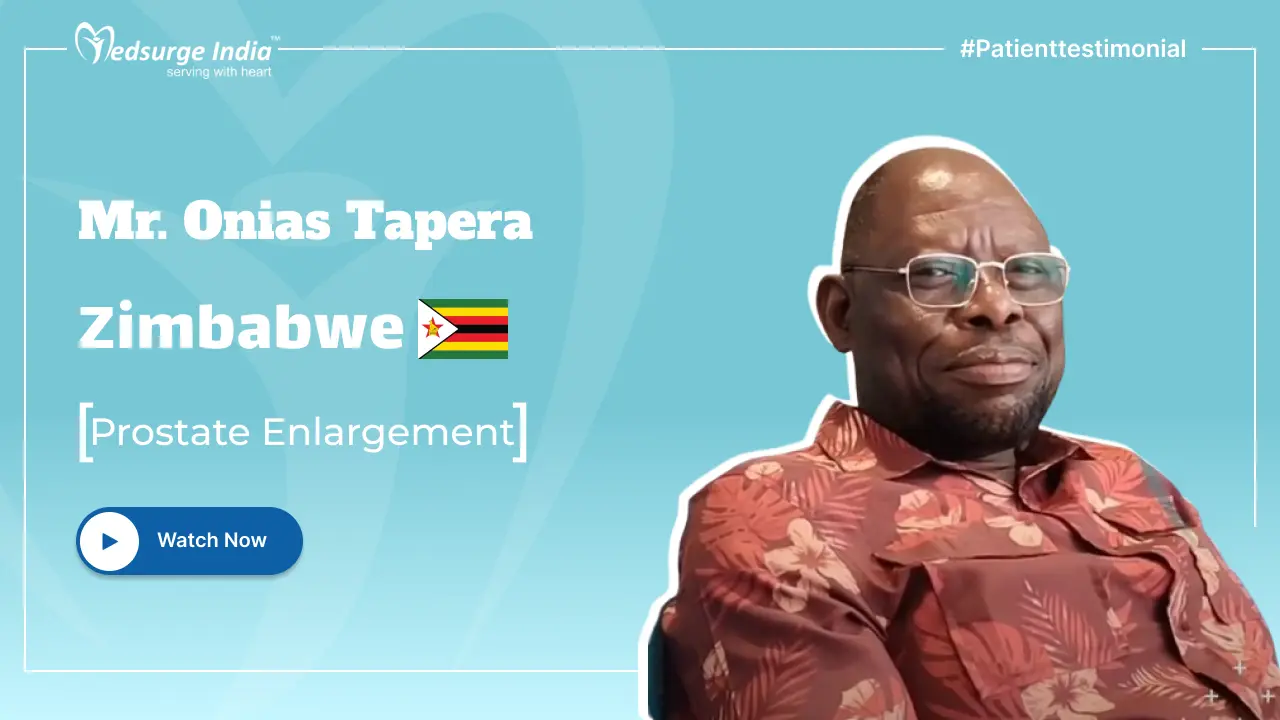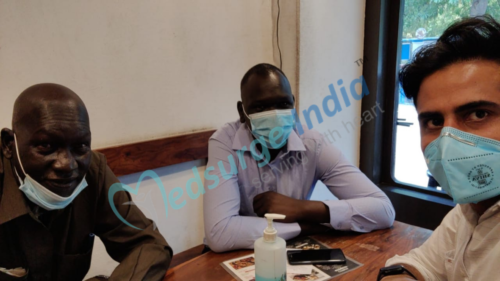
Stereotactic Radiosurgery in India is a non-surgical radiation therapy used to treat functional disorders and small tumors of the brain. It can deliver precisely-targeted radiation in smaller high-dose treatments than standard therapy, allowing healthy tissue to be preserved. When SRS is used to treat body tumors, it’s called stereotactic body radiotherapy (SBRT).
Outpatient procedures such as SRS and SBRT are common. Ask your doctor if you should arrange for someone to take you home afterward, and if you should wait several hours before eating, drinking, or taking any medications. Tell your doctor if you are pregnant, breastfeeding, or using oral or insulin to treat diabetes. Discuss whether you have an implanted medical device, claustrophobia, or allergies to contrast materials.
The cost of stereotactic radio surgery in India starts from 5500 USD. The patient must spend two days in the hospital and six days outside of it. The entire cost of treatment is determined by the patient’s diagnosis and the services he or she selected.
What Is Stereotactic Radiosurgery?
Stereotactic radiosurgery in India, or SRS, is a minimally invasive concentrated beam of radiation that aids in the destruction of cancer cells and other abnormalities of the brain, spine, and other body regions. The radiation beam is delivered using specialized equipment. Radiation is used with precision to ensure that adjacent organs and tissue are not harmed.
It is frequently used to treat disorders that do not originate in the central nervous system. There are several side effects that must be dealt with after radiation has successfully cured the disease. Fatigue, skin issues, and brain swelling are all common radiation after-effects. This is a targeted therapy that causes the cancerous cell to become distorted. There is no removal of the cancerous cell that is involved in the process.
Stereotactic body therapy in India, like stereotactic radiation, aims to cure cancer in the body. The radiation beams are specifically directed to the part of the tumor in this procedure. While the radiations are aimed towards the intended spot, the patient must remain in a static head position.
The specialized equipment focuses a large number of small radiation beams on a tumor or cancer growth. A single beam has minimal effects on the tissue it passes through, but at the point where all the beams connect, a focused dose of radiation is delivered. Tumors shrink and blood vessels block off over time as a result of the high dosage of radiation delivered to the affected area, shutting off the tumor’s blood supply.
How Stereotactic Radiosurgery Is used?
This treatment is only possible due to the development of cutting-edge radiation technologies that allow for maximum dose distribution within the target while limiting exposure to healthy tissue in the surrounding area. The goal is to deliver doses that will kill the tumor and give the patient permanent local control.
Several technologies are used in SRS and SBRT:
- Three-dimensional imaging and localization techniques that determine the exact coordinates of the target within the body
- Methods for immobilizing and positioning the patient with care, as well as maintaining the patient’s posture during therapy
- Gamma-ray or x-ray beams with a high degree of focus that converge on a tumor or abnormality
- Image-guided radiation therapy (IGRT) is a type of radiation therapy that employs medical imaging to confirm the location of a tumor before, and in certain cases, during, treatment. IGRT improves the treatment’s precision and accuracy.
CT, MRI, and PET/CT are three-dimensional imaging techniques that are used to find a tumor or abnormality within the body and characterize its exact size and structure. These images also help with treatment planning, which involves designing radiation beams to converge on the target area from various angles and planes, as well as patient positioning during therapy sessions.
Although SRS is most commonly associated with a one-day treatment, doctors may propose several stereotactically delivered treatments. This is important for tumors larger than one inch in diameter because the volume of normal tissue exposed to a single high dosage of radiation must be respected and limited, and the volume of normal tissue treated increases proportionally to tumor size. Radiation delivered in several sessions rather than one can improve safety and allow normal tissue to recover between treatments. As a result, fractionating the treatment allows for greater dosages to be provided while keeping an acceptable safety profile within the target. This approach is known as fractionated stereotactic radiotherapy (SRT), and it involves the administration of two to five doses of focused radiation, which are not always delivered on the same day.
SRS and SBRT are viable alternatives to invasive surgery, particularly for individuals who are unable to undergo surgery or who have tumors or abnormalities that are:
- Difficult to reach
- Located close to vital organs/anatomic regions
- Subject to movement within the body
Which Type of Disease Can Be Treated with Stereotactic Radiosurgery?
The following conditions can be treated with radiosurgery techniques:
Many types of Brain Tumors including:
- Benign and malignant
- Primary and metastatic
- Single and multiple
- Residual tumor cells following surgery
- Intracranial, orbital, and base-of-skull tumors
Arteriovenous malformations (AVMs) are tangled enlarged blood arteries in the brain that impairs normal blood flow and occasionally bleed.
Trigeminal neuralgia (a nerve problem in the face), tremors, and other neurological issues
SBRT is now used and/or being researched for the treatment of malignant and benign small-to-medium-sized tumors in the body and common disease sites, such as:
- Lung
- Liver
- Abdomen
- Spine
- Prostate
- Head and neck
Stereotactic radiosurgery in India works in much the same way as other types of radiation therapy. It does not remove the tumor; instead, it destroys the tumor cells’ DNA. As a result, these cells can no longer reproduce. Benign tumors normally diminish over the course of 18 months to two years after therapy. Tumors that are malignant or metastatic may decrease more quickly, even in a matter of months. Arteriovenous malformations (AVMs) treated with SRS may begin to thicken and shut off over a period of several years after therapy. Many tumors will remain stable and inactive for an extended period of time.
Stereotactic Radiosurgery Cost in India
On average a Stereotactic Radiosurgery Cost in India starts from Rs 91,000 (1100 USD). Depending on a number of variables, stereotactic radiosurgery varies in cost among hospitals and clinics. But, when compared to other countries the prices are much lower, not only that India is also home to the best doctors in every field.
Stereotactic Radiosurgery Cost in Different Cities in India:
| Cities | Starting Price |
|---|---|
| Delhi | Rs 1 Lakh (1200 USD) |
| Gurgaon | Rs 91,000 (1100 USD) |
| Noida | Rs. 80,000 (960 USD) |
| Mumbai | Rs 1 Lakh (1200 USD) |
| Hyderabad | Rs. 80,000 (960 USD) |
| Chennai | Rs 91,000 (1100 USD) |
| Kolkata | Rs. 80,000 (960 USD) |
| Bangalore | Rs 1 Lakh (1200 USD) |
Note: Please be aware that the costs listed are only an indication of what the treatment will cost initially and may change depending on a number of variables.
Factors That Can Affect Acute Stereotactic Radiosurgery Cost in India
The standard and excellence of medical treatment and amenities are comparable to those of the most prominent healthcare facilities in the world, even after deducting the cost of lodging, meals, and transportation. Following here are some variables that can affect Stereotactic Radiosurgery Cost in India:
- Medication costs.
- Duration of treatment.
- Geographical location.
- Hospitalization expenses.
- Government policies and subsidies.
- Medical tourism packages.
- Hospital reputation and infrastructure.
- The expertise and experience of medical professionals.
- The type and frequency of diagnostic procedures.
- The choice of treatment modality.
The most affordable Stereotactic Radiosurgery Cost in India is offered to patients worldwide by Medsurge India, under the supervision of highly qualified medical professionals.
Get Free Cost Estimation
Procedure
Stereotactic Radiosurgery in India
Stereotactic Radiosurgery in India is more favorable when compared to other countries. Three types of equipment can be used for SRS. Each of them uses a separate set of instruments and radiation sources. In India, radiosurgery is available with:
Gamma Knife Radiosurgery: The Gamma Knife employs 192 or 201 highly focused gamma radiation beams that all converge on the desired location. It’s ideal for treating small to medium intracranial lesions (5-40 millimeters).
LINAC radiosurgery: The linear accelerator (LINAC) is a common method for delivering high-energy x-rays, also known as photons. The linear accelerator can be utilized to treat bigger tumors during a single session or numerous sessions (fractionated stereotactic radiation) (fractionated stereotactic radiotherapy).
This type of machine is made by a variety of companies, including Novalis TxTM, AxesseTM, XKnifeTM, and CyberKnife® radiosurgery.
Proton beam radiosurgery: It is also known as heavy-charged-particle radiosurgery, and is used to treat small, irregularly shaped cancers or lesions. This therapy uses particles like protons or neutrons instead of radiation like gamma rays or X-rays.
What Are the Benefits of SRS?
There are various advantages to employing SRS instead of traditional therapy approaches:
- The first is that it seeks to deliver a high dosage of radiation to a target region while causing minimum damage to the healthy tissues in the surrounding area.
- The technique allows neurosurgeons to reach difficult-to-reach parts of the brain and treat diseases that were previously thought to be untreatable with traditional surgery.
- Because SRS is a non-invasive technique with no incisions, there are very few risks and complications, as well as relatively minor post-surgical discomfort.
- The operation is usually performed under local anesthesia with minimal sedation, although general anesthesia may be utilized for minors or persons who are unable to tolerate the surgery.
- Because it is a day surgery, hospitalization is minimal and may only require an overnight stay. Because most patients receive treatment as an outpatient, they experience less pain and have shorter recovery times than those who undergo traditional surgery.
Conclusion
- Treatments with radiosurgery are similar to getting an x-ray. You will not be able to see, feel, or hear the x-rays in most cases. One exception is that some patients receiving brain treatments may experience flashes of light even when their eyes are closed while the equipment is on. The procedure itself causes no pain or discomfort.
- You should notify your doctor or nurse if you feel pain for any other reason, such as back pain or discomfort from the head frame or immobilization device.
- There may be some mild bleeding from the pin locations that will be wrapped after the head frame is removed. You might have a headache, and you can ask for medication to help you feel better.
- Patients who have had radiosurgery or SBRT can usually resume their normal activities within one or two days.
- Problems that arise as a result of the therapy as well as radiation damage to healthy cells in the treated region are examples of side effects of radiation treatment.
- The number and severity of side effects you encounter will vary depending on the type of radiation you get, the dosage, and the portion of your body that is being treated. Any side effects you experience should be discussed with your doctor and nurse so that they can assist you in managing them.
- Early side effects from radiation therapy might occur during or shortly after treatment and usually subside within a few weeks. Side effects can appear months or years after the medication has been taken. Tiredness or exhaustion, as well as skin problems, are common early side effects of radiation therapy. Sensitive, red, itchy, or puffy skin may develop in the treatment region. Dryness, itching, peeling, and blistering are some of the other skin changes.
Other early side effects, depending on the location being treated, may include:
- Hair loss in the treatment area
- Mouth problems and difficulty swallowing
- Eating and digestion problems
- Diarrhea
- Nausea and vomiting
- Headaches
- Soreness and swelling in the treatment area
- Urinary and bladder changes
Radiation therapy carries a small risk of cancer development. Following cancer treatment with radiation, your radiation oncologist should check you for recurring and new cancers on a frequent basis.
The goal of SBRT is to maximize the cancer-killing capabilities of radiation treatment while reducing its influence on healthy tissues, hence limiting the treatment’s negative effects.
The Most Important Frequently Asked Questions
Q: What Is the Difference Between Stereotactic Radiotherapy and Radiotherapy?
A: They differ from normal radiation regimes in that very little if any normal tissue is exposed to the radiation. The difference between stereotactic radiosurgery and stereotactic radiotherapy has to do with the intensity and duration of the radiation treatments.
Q: How Many Times Can Stereotactic Radiation Be Used?
A: As a result, the risk of side effects is reduced. In most cases, you will receive between one and eight treatments. Stereotactic radiotherapy is referred to by a variety of words, which can be confusing. Stereotactic body radiation (SBRT) or stereotactic ablative radiotherapy are two terms for stereotactic treatment for the body (SABR).
Q: Do You Lose Your Hair with Stereotactic Radiosurgery?
A: If the area being treated is right under the scalp, some people may lose a little bit of hair temporarily. Rarely, months after Gamma Knife radiosurgery, people may have late adverse effects such as additional brain or neurological issues.
Q: After SRS, What Can You Expect?
A: You can expect the following after the procedure: If there is a head frame, it will be eliminated. Minor bleeding or pain at the pin locations is possible. If you have a headache, nausea, or vomiting following the surgery, you will be given the necessary drugs.
Q: What Does Stereotactic Mean?
A: Definition of Stereotactic: A surgical method that involves accurately directing the tip of a sensitive instrument (such as a needle) or a beam of radiation in three planes using coordinates provided by medical imaging in order to reach a specified locus in the body.
Top Hospitals for Stereotactic Radiosurgery in India
Top Doctors for Neurology And Neurosurgery
Dr. Ravi Mohan Rao B
Senior Consultant
Experience: 25 years of experience
Apollo Hospital, Seshadripuram
Bangalore, India
Dr. V. Shankar
Senior Consultant
Experience: 30 years of experience
Sri Ramachandra Medical Centre, Chennai
Chennai, India
Dr. Anindya Basu
Consultant
Experience: 11 years of experience
Institute of Neurosciences, Kolkata
Kolkata, India
Dr. Kiran. S. Khanapure.
Consultant
Experience: 22
Manipal Hospital Millers Road formerly Vikram Hospital Bangalore
Dr. Neeraj Gupta
Consultant
Experience: 18 years of experience
Indian Spinal Injuries Center, New Delhi
New Delhi, India
Dr. Goutham Cugati
Senior Consultant
Experience: 20+ years of experience
Narayana Multispeciality Hospital, R S Naidu Nagar, Mysore
Mysore, India
Dr. Kutbuddin Akbary
Consultant
Experience: 16 years of experience
Max Super Specialty Hospital Gurgaon
Gurgaon, India
Dr. Sitesh Das Gupta
Senior Consultant
Experience: 46+ years of experience
Narayana Superspeciality Hospital, Shibpur, Howrah
Howrah, India
Dr. Rima Khanna
Consultant
Experience: 12 years of experience
Fortis Hospital Delhi Shalimar Bagh
New Delhi, India












